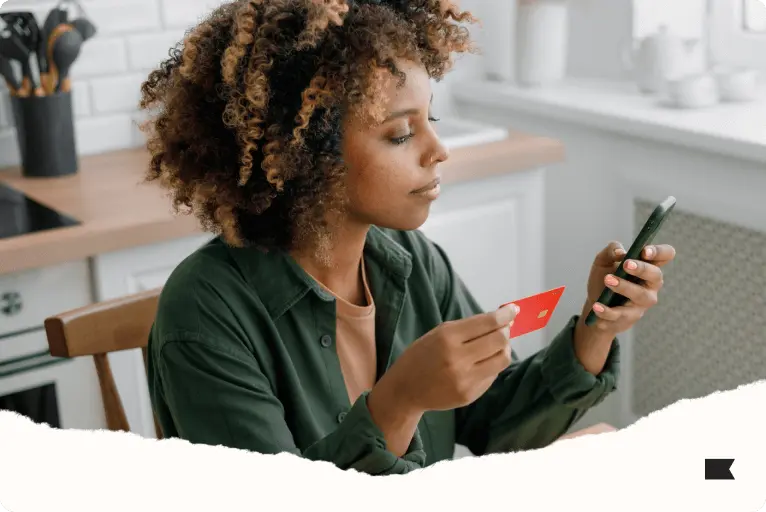
AI, data privacy, + multi-channel marketing: experts share 2025 marketing predictions
If you’re feeling anticipation—and a little apprehension—with the start of 2025, you’re not alone. With political changes across the globe, unprecedented spending last Black Friday Cyber Monday, and AI developments coming in hot, the year has potential to be transformative for brands across industries.
This year, the way you work, talk to your customers, and sell your products are all subject to change. But with that change comes the potential to strengthen customer relationships, simplify your workflows, and increase your revenue.
We sat down with 12 marketing automation experts from all over the world. These are the marketing trends they see coming in 2025.
1. Smarter customer acquisition
Acquisition and retention are two sides of the same coin, and they’re both key to a healthy marketing strategy. While they should both be an evergreen effort, 2025 is the year when “brands will get smarter about customer acquisition,” says Ben Zettler, founder of Zettler Digital. “Growth at all costs isn’t an option anymore.”
Growth at all costs isn’t an option anymore.
Paid ads can be expensive, especially around holidays. That’s why it’s so important to get clear on ways you can bring in customers without overspending.
As we head into 2025, two trends are helping marketers do just that.
Inviting followers to your owned channels will make your social spend more effective
Most brands’ investments in social channels are significant, but results can be difficult to own and measure. With followers coming and going and algorithms that can be hard to keep up with, they’re powerful—but delicate—channels.
Consider Instagram, for example. “The key to making your investment in Instagram more effective is to invite users off of social and into your owned channels like email, SMS and loyalty,” says Brett Bernstein, founder and CEO of Gatsby, a company that helps brands with list growth by capturing new subscribers from social.
“While sign-up forms are still the primary way to grow your subscriber base, Instagram can be a powerful channel for growing your lists even faster,” Bernstein adds. “Especially if you have an active Instagram community and a robust, reliable tech stack.”
The key to making your investment in Instagram more effective is to invite users off of social and into your owned channels like email, SMS, and loyalty.
Gatsby integrates with Klaviyo to make this list growth process via Instagram simple. You can even segment these new subscribers down to the specific keywords they sent you over Instagram when they signed up to your list (especially helpful if it was a particular holiday or your products are seasonal).
Read more about how to build deeper relationships with your customers by integrating your social channels with your owned lists.
More focused reporting will inform acquisition strategies
Zettler emphasizes the importance of properly evaluating the sales performance of your newly acquired email and SMS subscribers. He recommends reporting on their performance in these buckets:
- 60-day lifetime value (LTV) for newly acquired users
- LTV for users opted-in to marketing vs. those that are not
- Prevalence of product subscribers vs. one-time purchasers
- Usage rate of initial discount offers
- Best selling products for new customers
- Product affinity for second purchases
“Brands will put these metrics front and center when evaluating the effectiveness of their email and SMS marketing,” Zettler says. “A massive ‘unlock’ to converting new sales is knowing what’s driving sales for the customers that have bought before them.”
2. AI driving efficiency in workflows—for real
AI has been storming the gates of the marketing castle for a few years now. While it can be incredibly effective for certain marketing efforts, it’s not ready to do all your work just yet.
Here are some tried-and-true ways our partners are using AI right now, and how they see it advancing in 2025.
Generative AI will help marketers execute faster across channels
The future is multi-channel (more on that in the next section)—but it’s going to take some work. In order to reach your customers and prospects across channels, you need to create a lot of content.
In 2025, Ashley Ismailovski, director of email marketing at SmartSites, expects brands to use more AI-powered tools to advance their omnichannel marketing strategy in these ways:
- To identify new segments
- To generate email template designs
- To generate subject lines in bulk
“A multi-channel approach means brands need to get more done in less time,” says David Visser, CEO of Zyber. “Generative AI—especially Klaviyo AI—allows marketers to focus on things that drive the highest ROI without compromising on quality.”
Generative AI—especially Klaviyo AI—allows marketers to focus on things that drive the highest ROI without compromising on quality.
Optimizing for AI will emerge as a crucial piece of A/B testing
With Apple Intelligence already summarizing emails for users, we’re in a “new wave of AI-enabled tools as part of our daily email consumption routines,” says Joe Hsieh, founder of Retention Commerce. “We’ll need to create content that gets recognized or highlighted by AI summarization and notification tools to adapt to this new reality.”
We’ll need to create content that gets recognized or highlighted by AI summarization and notification tools to adapt to this new reality.
One of the best ways to make sure your content gets recognized by AI tools is to use Klaviyo AI to generate more options that you can then A/B test. This way, you can see which of your email and SMS campaigns are getting picked up by AI-enabled software like Apple Intelligence and tools like it in the near future.
Klaviyo AI can also:
- Identify profile patterns that predict which version of a message an individual customer is most likely to engage with, and send that version to them.
- A/B test different sign-up form designs, display options and timing, and incentives to help you figure out which combination yields the best results.
- Generate subject lines with AI and show you your best-performing recent subject lines.
- A/B test your send times.
AI-powered product recommendations will make emails more relevant
One of the most effective ways to personalize your emails is to send product recommendations related to what subscribers have viewed or bought in the past.
“Brands are looking for the best ways to show more products to consumers that are relevant and that they’re more likely to buy based on very detailed criteria,” says Erin Aguilar, senior customer success manager at Klaviyo. “As AI grows in popularity, brands will lean on AI to make those dynamic product recommendations.”
As AI grows in popularity, brands will lean on it to make those dynamic product recommendations.
Authentic style + messaging will stand out from AI-generated content
For every few steps we take toward co-creating our content with AI, it will be important to take a step back. The reality is that AI-generated content is everywhere, and people are getting better at recognizing it. Don’t let an overdependence on AI be the reason your marketing messages get ignored.
“Brands with authentic style and messaging will be even more powerful and memorable than those leveraging AI to generate their content, especially once they hit wider levels of recognition and social media virality,” says Stefan Milicevic, head of service at Underground Ecom.
Brands with authentic style and messaging will be even more powerful and memorable than those leveraging AI to generate their content.
Let this be your sign to budget for those creatives you’ve been wanting to hire. It’s likely to pay off in the end.
Besides, there are plenty of other tasks Klaviyo AI can take off your plate, including automatic reputation repair, predictive analytics, and more.
3. Meeting the multi-channel challenge—without the headache
“With unpredictable economic headwinds, brands have to evaluate all their processes and tools to understand where costs are bloated and where they can cut back,” says Zettler. “It’s more important than ever for brands to consolidate tools and control costs. I see that continuing well into 2025.”
Some questions brands are asking themselves:
- How can singular marketing tools serve multiple functions?
- What do we have to gain from consolidating our tech stack?
Our experts identify these trends:
Consolidation will help keep your budget under control
It’s all too easy to build your tech stack one tool at a time—this one for ease of use, this one because the price is right, this other one because, well, now, it’s got all your data, and migrating is a pain. But the right consolidation will pay off in spades.
99% of Zettler Digital’s clients have consolidated their email and SMS into Klaviyo. “This makes brands’ owned marketing more efficient and ultimately decreases cost,” says Zettler.
Consolidation will increase personalization capabilities
Everybody wants to personalize, but no one has the time to chase down data points across tools and synthesize them every time they plan a messaging strategy. That’s why it’s so important to have all your data in one place.
“The days of disparate customer relationship management (CRM) communication are behind us,” says Chip Moloney, chief marketing officer at The Maze Group. “The value of consolidating everything into one platform is too great to ignore. It gives marketers undivided control of the customer journey. And one data source—as opposed to many—opens up more personalization capabilities.”
Consolidating everything into one platform gives marketers undivided control of the customer journey.
Deeper data will make your multi-channel marketing easier + more effective
Not only will consolidation save you money and help you level up your personalization, a single source of truth for your data also gives you a deeper understanding of your customers and your business.
“Klaviyo’s customer data platform and marketing analytics help brands get better visibility across their marketing channels,” says Visser. “We’re seeing more and more brands using these products to help them drive smarter data decisions.”
We’re seeing Klaviyo’s CDP help brands get better visibility across their marketing channels and drive smarter decisions.
4. The next frontier for SMS
While some brands still consider SMS optional, plenty recognize it as a powerful way to build more personal connections with subscribers. Being a delicate channel, it’s crucial to stay up to date on how to make your SMS program profitable.
But a few recent changes just may revolutionize the way your customers interact with text marketing.
Rich communication services (RCS) will be a “game changer”
RCS, the messaging protocol that Apple recently began supporting, has features that include:
- Rich media support: high-resolution images, videos, audio files, and image carousels
- Interactive elements: display cards that can include images, text, and call-to-action buttons
- Business verification: verified business profiles with brand logo, verification badge, and key business information
- Read receipts: insights into message engagement, showing when a message has been read
- Typing indicators: notifications indicating when a subscriber is typing a response
- End-to-end encryption: secure communication that ensures only the intended sender and recipient can read messages
Sammy Tran, founder and CEO of BMO Media, calls Apple’s update to support RCS a “game changer” for SMS marketing: “Not only will brands be able to send rich media—meaning customers can view high-quality visuals of products without leaving the messaging app—but the addition of CTA buttons will simplify the customer journey.”
RCS is a game changer for SMS marketing. Customers can view high-quality visuals of products without leaving the messaging app, and the addition of CTA buttons will simplify the customer journey.
Michael Pattison, lead digital strategist at Klaviyo, emphasizes the importance of understanding how RCS works compared to plain text SMS. “Like MMS, some brands love it and get a great ROI. But others will still see better results with short, text-only messages,” he says. “Testing RCS against your current SMS strategy will be the best way to learn how to utilize this new medium.”
Two-way messaging will help personalize text marketing
Batch and blast is an outdated sending approach across channels—but a personalized approach with the option for a two-way conversation gives subscribers a more convenient, engaging experience.
“More broad usage of two-way SMS using AI and chatbot features will drive a change in brands’ understanding of their customers and enrich customer data for deeply personalized CRM experiences,” says David Retter, operating partner at Stride Consumer Partners.
More broad usage of two-way SMS using AI and chatbot features will change brands’ understanding of their customers.
Kathleen Loftus, global digital director at ICONIC LONDON, suggests a few ways to use two-way messaging when asking questions. You can:
- Offer tailored suggestions
- Just have fun (by letting responders reply however they like)
- Gamify replies
For St. Patrick’s Day, ICONIC LONDON had SMS subscribers reply back with “Rainbow” for 15% off of “Gold” for a chance at free mascara. “These interactive add-ons allow for data capture and fun experiences,” Loftus says.
5. Greater emphasis on data privacy + compliance
Changes from Gmail, Yahoo, and Microsoft made 2024 a big year for data privacy, and marketing experts see that trend continuing.
“In 2025, we expect more brands to make a conscious effort to ensure their email and SMS efforts are compliant and transparent, and to provide personalized value to their subscribers,” says Ismailovski.
In 2025, we expect more brands to make a conscious effort to ensure their email and SMS efforts are compliant and transparent.
Implementing BIMI will help improve deliverability + combat phishing
BIMI stands for “Brand Indicators for Message Identification,” and it allows brands to display their logos in the inboxes of their customers. While it’s not mandatory, it helps brands maintain stricter email authentication, keeping out bad actors and improving deliverability.
“BIMI is now more accessible via Common Mark Certificates, a new type of certificate issued by Certificate Authorities,” says Pattison. “If you’re a high-volume sender and you don’t have BIMI set up, you’re leaving engagement and money on the table.”
If you’re a high-volume sender and you don’t have BIMI set up, you’re leaving engagement and money on the table.
6. A bigger investment in loyalty programs
Customer loyalty programs are an important part of a solid marketing strategy for a few reasons:
- The recurring revenue you drive through your loyalty program can help keep your brand financially strong.
- A higher customer LTV can offset your acquisition costs.
- A good loyalty program can spark real word of mouth.
Loftus predicts that brands will invest more in loyalty programs in 2025. “Create additional value in the form of personalized offers for customers who love your brand,” she suggests. “Treat them like a friend instead of a customer. Let them try products in advance for feedback, give them double points, and reward them with masterclasses or special gifts.”
Create additional value in the form of personalized offers for customers who love your brand.
7. Creativity—and authenticity—in how you communicate with customers
In 2025, the inbox will be more competitive than ever—which means you really need to think through how you’re going to stand out. Once a subscriber gets sick of your content, they’re just one click away from ending the relationship.
Our experts are noticing a few ways to sweeten your communication with your subscribers.
Sharing less salesy content will warm hearts
Loftus’ prediction of a deeper focus on loyalty is rooted in a look toward new approaches on a broader scale: brands will do well to sell less and connect more. “More heartfelt marketing instead of solely pushing product sales will be a trend in 2025,” she says. “In this complex, competitive sales environment, brands need to embrace a long-term approach to build trust.”
In this complex, competitive sales environment, brands need to embrace a long-term approach to build trust.
Loftus offers a few ideas to experiment with:
- Embrace nostalgia in your marketing.
- Include more storytelling and “behind the brand” or “behind the scenes”.
- Share more educational content.
Using interactive elements in your marketing emails will help engagement
Emails with static images have a lot to recommend them, but let’s face it: people have been looking at them for years. They’re what subscribers expect from a marketing email. One way to surprise and delight your audience is to introduce interactive elements to your emails.
“We’re seeing more and more brands leverage interactive elements in their emails. Whether it be quizzes, polls, review generation, or mini-games, we’ve seen the use of attention-grabbing elements increase click rates,” says Ismailovski.
More brands are leveraging interactive elements in their emails, and we’ve seen them increase click rates.
2025 is here. We’ve got your back.
It may only be January, but chances are, your marketing strategy is already in full swing. Klaviyo is the single-platform solution to help you execute your plans all year long.

Related content

Discover the best marketing automation platform for 2026 and learn how to choose based on data, integrations, scalability, and the features that drive real customer value.

Discover 4 proven ways to reduce cart abandonment and recover lost sales. Learn how to build trust, streamline check-out, and personalize abandoned cart flows to convert more shoppers.

Looking for the best Shopify apps for marketing and customer service? Klaviyo, Rebuy, and Recharge together create a high-performing tech stack that revenue and customer retention.